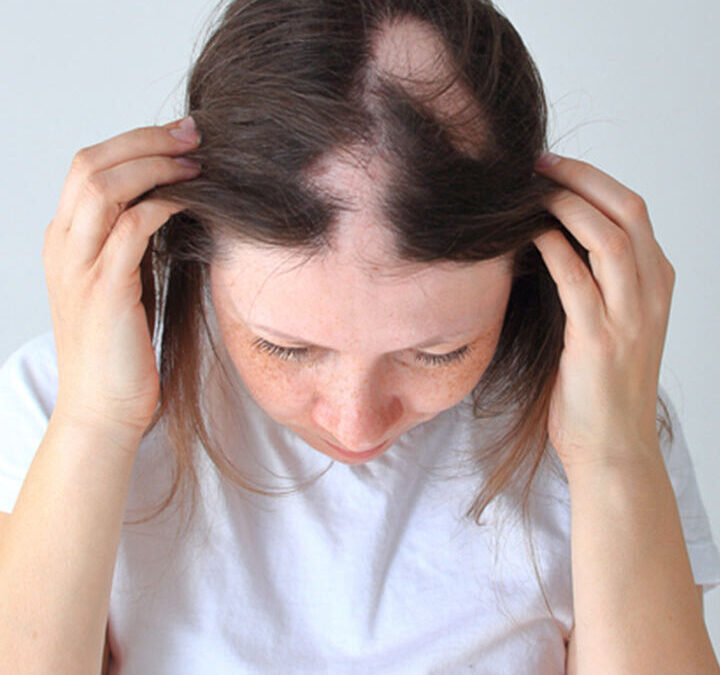- Kartaltepe Mahallesi İncirli Caddesi Limon Çiçeği Sokak No: 1 34145 Bakırköy İstanbul
- +90 541 548 52 47

Don’t Do These After Hair Transplant
27/09/2022
How Effective Are Cosmetic Products For Hair And Scalp Health?
27/09/2022Trichotillomania, which is expressed as a hair pulling disorder, is considered as an obsessive compulsive disorder. This behavior, which is associated with an obsessive disease, can be found in any part of the patient’s body; it mostly shows itself in the form of pulling and pulling the hairs on the scalp. Apart from hair, eyebrows, eyelashes, beard and mustache hairs can also be the target of trichotillomania patients. This problem, which requires a comprehensive treatment planning and a multidisciplinary approach in treatment, is directly related to both hair health and hair transplantation. Experts of hair pulling disorder; They say that it is related to psychological conditions such as anxiety, depression, eating disorders, traumas, emotional stress, and that the disease can be triggered even more with these accompanying disorders.
Trichotillomania can occur in two ways, either automatically or as a focused behavior. While patients with automatic type trichotillomania perform the action unconsciously, in the focused type, it may occur as a reaction to negative emotions such as stress, sadness, and anxiety. Experts say that they observe focused trichotillomania mostly in adults, while children are in the automatic category.
In the case of focused trichotillomania, hair pulling action; Behaviors such as chewing and licking hair can also be added. This condition, which is called trichophagia, is defined as hair or hair eating disease.
How Is Trichotillomania Induced Alopecia Diagnosed?
In clinical findings, trichotillomania; It is observed as diffuse, irregular, non-scarring, patchy alopecia. The shape of the patches is angular or irregular. When the hair strands are examined, it can be determined that they have different breaking points and lengths. The appearance of hair loss caused by trichotillomania is similar to alopecia areata and telgoen effluvium. The trichoscopy method is used for differential diagnosis. Trichoscopy is a diagnostic method used in dermoscopic examination of hair strands and scalp. In cases where trichotillomania cannot be differentiated dermoscopically from alopecia areata, supportive diagnostic methods such as negative hair pull test can also be applied.
What Are the Symptoms of Trichotillomania?
- Repetitive action of plucking hair
- Significant hair loss
- Regional baldness
- Feeling of psychological relief after the action
In Who Is Trichotillomania More Common?
Hair pulling disease; does not discriminate by age, gender or ethnicity. It has been determined that this disease, which can be seen in all nationalities and all age groups, is seen equally in boys and girls in childhood, and more common in women as age progresses.
How Is Trichotillomania Treated? To Whom Should You Go?
Trichotillomania, which manifests itself as repetitive and unavoidable hair or hair plucking behavior, is a psychological, physiological and aesthetic problem. Therefore, it should be treated with a multiple approach. Experts say that there is no standard treatment for this behavior disorder, which can increase with mood disorders and psychological stress; they state that treatment consists of both psychotherapeutic and pharmacological options. They are of the opinion that it can be overcome by a comprehensive treatment planning in cooperation with psychiatry and dermatology, and that a uniform approach will be insufficient.
Does the Hair Lost as a Result of Trichotillomania Grow Again?
It is a matter of curiosity whether alopecia that develops due to repetitive hair pulling behavior is temporary or permanent. There is no clear answer to this question. Hair follicles can be permanently damaged due to this long-lasting obsessive action. Therefore, alopecia may be permanent. In cases where it is noticed in time and appropriate treatments are performed, it is possible to save hair follicles.
Can Hair Transplantation Be Performed If Permanent Hair Loss Has Occurred As A Result Of Trichotillomania?
Hair transplantation is not a suitable option and is not recommended for cases where hair plucking is not treated and this habit continues. Patients are at risk of damaging the transplanted hair. Therefore, it is necessary to treat this disease first and to make sure that it will not return.




